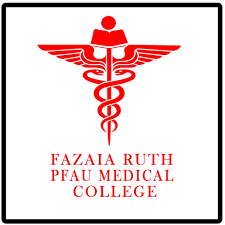

Academic Researcher
Journal of Basic and Clinical Sciences
Volume 02, Issue 01, 2025
An Official Journal of Fazaia Ruth Pfau Medical College, Air University
ISSN: 3008-0495 (Online)
ISSN: 3008-0487 (Print)
Exploring the Resistance Pattern of Salmonella Typhoidal Species
Rehana Faryal Mehdi, Zona Irfan, Nazia Qamar, Ambreen Rehman, Nadeem Nusrat, Ali Haider
Acad Res. 2024, 1 (1): 6-10
DOI: https://doi.org/10.70349/ar.v1i1.5
Abstract
Background: Enteric fever/ typhoid, an infection caused by Salmonella enterica
serovars: typhi and paratyphi, is continuously increasing with the emergence of antibiotic
resistant Salmonella. According to WHO, an estimated 110,000 people die from it every
year.
Objective: The primary objective of this study was to investigate the antibiotic
susceptibility pattern of typhoidal Salmonella species in blood cultures of patients.
Methodology: This was a cross-sectional study, executed at Microbiology Laboratory
(Diagnostic Centre), PAF Hospital Faisal Base Karachi, from August 2023 to March
2024. Salmonella typhi in all clinically suspected cases of typhoid fever was identified
through conventional techniques following standard microbiological protocols.
Assessment of antibiotic susceptibility was performed by Kirby-Bauer disk diffusion
method.
Results: Out of 1178 blood samples culture 54 were gram positive bacteria, 193 were
gram negative bacteria and 931 samples showed no growth. Among the gram-negative
sample, 140 tested positive for Salmonella enterica typhoidal species. API 20E was used
to further differentiate and identify the Salmonella species, 131 cases were Salmonella
typhi and 9 paratyphi. Out of 140 Salmonella isolates, 77% (108) were resistant to
ampicillin, 49.2% (69) to Ceftriaxone, 35% (49) to Sulfamethoxazole, and 47% (66) to
Ciprofloxacin. Azithromycin and Meropenem remained sensitive in all 140 isolates of
Salmonella typhoidal species.
Conclusion: This study identified the susceptibility profiles of Salmonella typhoidal
species. Our findings underscore the importance of continuous surveillance and judious
use of antibiotics to combat the emergence of antibiotic –resistant strains. Further research
is warranted to continuously monitor and adapt treatment protocols in response to
evolving resistance in Salmonella typhoidal species.
Keywords
Gram positive bacteria, Gram negative bacteria, frequency, Salmonella typhi, E. coli.







